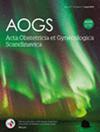Real-time telementoring in gynecology ultrasound: Impact on patient pathway and postgraduate training
Abstract
Introduction
This study aims to determine the value of real-time telementoring for transvaginal ultrasound scan (TVUSS) supervision in gynecology, when compared with current practice in an acute gynecology unit in a London teaching hospital.
Material and methods
A prospective cohort study was conducted to compare the timing of ultrasound scans by trainees in current practice (control cohort, n = 100) and compared with a trainee-matched series of cases with telementoring (n = 100). The telementoring cohort used technology (TIMS, Chelmsford MA, USA) to real-time livestream the ultrasound scan to a remote supervisor with an audio connection between the trainee and trainer. Data collected included key scan time points and outcomes. The clinicians completed a questionnaire to evaluate usability, feasibility, and acceptability of the telementoring technology.
Results
The prospective trainee TVUSS timing in the control cohort found a 6-min average time to call for a second opinion and a 4.4-min mean wait time, range 1–35 min. The control trainee cohort mean length of TVUSS was 14.2 min, with 62% reporting management changed as a result of senior input. The evaluation of direct livestreaming supervision involved five supervisors and 16 trainees. All participants were satisfied with image quality and 14.2% (3/21) had issues with audio. Once set up effectively, users were satisfied with the ability to communicate. The average length of the gynecology trainee TVUSS with telementoring was 9.1 min, thus on average a 5.1-min reduction (p < 0.001) in the length of the patient scan. The average System Usability Scale score was 81.7. All reported they would be confident using the technology for remote supervision, and qualitative feedback was positive.
Conclusions
This comparative cohort study demonstrates the feasibility and usability of TVUSS telementoring as a supervision tool for live scans. The data demonstrate a reduction in the length of the TVUSS when using telementoring, compared with needing to call in a senior colleague midway through the scan, as is current practice. The technology holds the potential to set up a hub with one senior supervising multiple sites remotely, improving access to expert opinion, training, and out-of-hours TVUSS to optimize time to diagnosis and patient management.





 求助内容:
求助内容: 应助结果提醒方式:
应助结果提醒方式:


